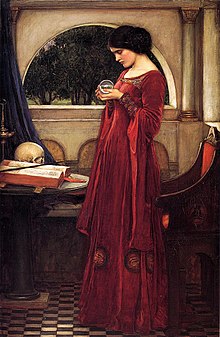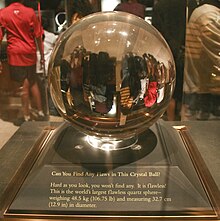
Fortune telling is the unproven spiritual practice of predicting information about a person's life. The scope of fortune telling is in principle identical with the practice of divination. The difference is that divination is the term used for predictions considered part of a religious ritual, invoking deities or spirits, while the term fortune telling implies a less serious or formal setting, even one of popular culture, where belief in occult workings behind the prediction is less prominent than the concept of suggestion, spiritual or practical advisory or affirmation.

Crystal gazing or crystallomancy is a method for seeing visions achieved through trance induction by means of gazing at a crystal. Traditionally, it has been seen as a form of divination or scrying, with visions of the future, something divine etc., though research into the content of crystal-visions suggest the visions are related to the expectations and thoughts of the seer.

Contact juggling is a form of object manipulation that focuses on the movement of objects such as balls in contact with the body. Although often used in conjunction with "toss juggling", it differs in that it involves the rolling of one or more objects without releasing them into the air.

Scrying, also referred to as "seeing" or "peeping," is a practice rooted in divination and fortune-telling. It involves gazing into a medium, hoping to receive significant messages or visions that could offer personal guidance, prophecy, revelation, or inspiration. The practice lacks a definitive distinction from other forms of clairvoyance or divination but generally relies on visions within the chosen medium. Unlike augury, which interprets observable events, or divination, which follows standardized rituals, scrying's impressions arise within the medium itself.
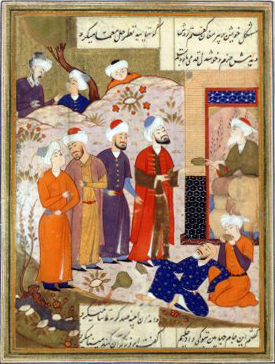
The Cup of Jamshid is a cup of divination, which in Persian mythology was long possessed by the rulers of ancient Greater Iran. Its name is associated with Jamshid, a mythological figure of Greater Iranian culture and tradition. The cup has also been called Jam-e Jahan nama, Jam-e Jahan Ara, Jam-e Giti nama, and Jam-e Kei-khosrow. The latter refers to Kaei Husravah in the Avesta, and Sushrava in the Vedas.

Hydromancy is a method of divination by means of water, including the color, ebb and flow, or ripples produced by pebbles dropped in a pool.

A witch ball is a hollow sphere of glass. Historically, witch balls were hung in cottage windows in 17th and 18th century England to ward off evil spirits, witches, evil spells, ill fortune and bad spirits.
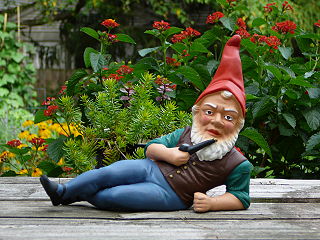
A garden ornament or lawn ornament is a non-plant item used for garden, landscape, and park enhancement and decoration.
Methods of divination can be found around the world, and many cultures practice the same methods under different names. During the Middle Ages, scholars coined terms for many of these methods—some of which had hitherto been unnamed—in Medieval Latin, very often utilizing the suffix -mantia when the art seemed more mystical and the suffix -scopia when the art seemed more scientific. Names like drimimantia, nigromantia, and horoscopia arose, along with other pseudosciences such as phrenology and physiognomy.

A yard globe is a mirrored sphere displayed as a lawn ornament, typically atop a conical ceramic or wrought iron stand. Sizes ranges from 1 in (25 mm) up to 10 m (33 ft) in diameter, with the most popular gazing ball being 12 in (300 mm). Gazing balls were originally made of glass, but may now be made of stainless steel, acrylic, ceramic, or stained glass.

George Frederick Kunz was an American mineralogist and mineral collector.

Catoptromancy, also known as captromancy or enoptromancy, is divination using a mirror.
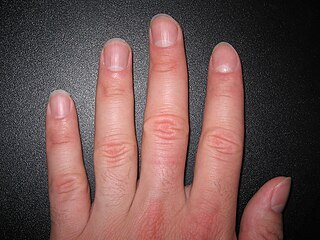
Onychomancy or onymancy is an ancient form of divination using fingernails as a "crystal ball" or "scrying mirror" and is considered a subdivision of palmistry. As with palmistry, the contradictions between different interpretations and the lack of evidence for the predictions have led onychomancy to be viewed as a pseudoscience by academics.

A psychic reading is a specific attempt to discern information through the use of heightened perceptive abilities; or natural extensions of the basic human senses of sight, sound, touch, taste and instinct. These natural extensions are claimed to be clairvoyance (vision), clairsentience (feeling), claircognisance and clairaudience (hearing) and the resulting statements made during such an attempt. The term is commonly associated with paranormal-based consultation given for a fee in such settings as over the phone, in a home, or at psychic fairs. Though psychic readings are controversial and a focus of skeptical inquiry, a popular interest in them persists. Extensive experimentation to replicate psychic results in laboratory conditions have failed to find any precognitive phenomena in humans. A cold reading technique allows psychics to produce seemingly specific information about an individual from social cues and broad statements.

Claude Alexander Conlin, also known as Alexander, C. Alexander, Alexander the Crystal Seer, and Alexander the Man Who Knows, was an American spiritual author, vaudeville magician who specialized in mentalism and psychic reading acts, dressed in Oriental style robes and a feathered turban, and often used a crystal ball as a prop. In addition to performing, he also worked privately for clients, giving readings. He was the author of several pitch books, New Thought pamphlets, and psychology books, as well as texts for stage performers. His stage name was "Alexander," and as an author he wrote under the name "C. Alexander."
Romani folklore encompasses the folktales, myths, oral traditions, and legends of the Romani people. The Romani were nomadic when they departed India during the Middle Ages. They migrated widely, particularly to Europe, while other groups stayed and became sedentary. Some legends say that certain Romani have passive psychic powers such as empathy, precognition, retrocognition, or psychometry. Other legends include the ability to levitate, travel through astral projection by way of meditation, invoke curses or blessings, conjure or channel spirits, and skill with illusion-casting. The belief in vampires originated from the Roma. The Roma from Slavic countries believe in werewolves. Romani chovihanis often use a variety of herbs and amulets for protection. Garlic is a popular herb used by the Roma.

Carved stone balls are petrospheres dated from the late Neolithic, to possibly as late as the Iron Age, mainly found in Scotland, but also elsewhere in Britain and Ireland. They are usually round and rarely oval, and of fairly uniform size at around 2+3⁄4 inches or 7 cm across, with anything between 3 and 160 protruding knobs on the surface. They range from having no ornamentation to extensive and highly varied engraved patterns. A wide range of theories has been produced to explain their use or significance, with none gaining very wide acceptance.
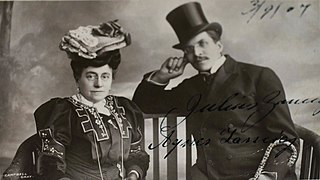
Julius and Agnes Zancig were stage magicians and authors on occultism who performed a spectacularly successful two-person mentalism act during the late 19th and early 20th centuries. Julius Zancig (1857–1929) – born Julius Jörgensen in Copenhagen, Denmark – and his wife Agnes Claussen Jörgensen – also born in Copenhagen, and known as Agnes Zancig – were the originators of the routine.

Various forms of witchcraft and divination are mentioned in the Hebrew Bible, which are expressly forbidden.
